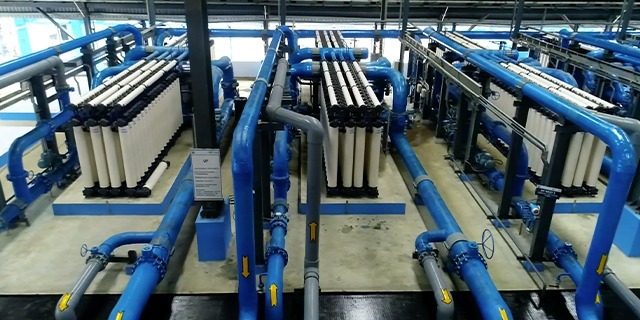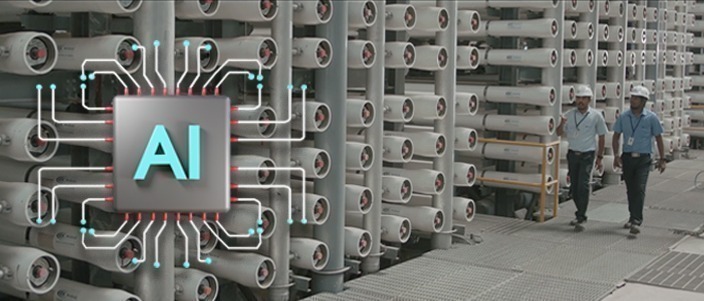Water an Essential Element in Green Hydrogen Production
12 December 2023 Submitted by Akshat Sarolia

In the pursuit of a sustainable future, green hydrogen has emerged as a promising solution for clean energy production. As the world strives to reduce greenhouse gas emissions and shift away from fossil fuels, the role of water in the production of green hydrogen cannot be overstated. Water, a seemingly ordinary substance, becomes a vital component in the quest for a greener and more sustainable energy landscape.
In the production of green hydrogen, the quality of water used is an important factor that can impact the efficiency and overall sustainability of the process. While water itself is a renewable resource, certain considerations need to be taken into account regarding its quality to ensure optimal performance and minimize potential issues.
Impact of Water Quality on Green Hydrogen Production
In green hydrogen production, one primary concern is the purity of the water. Impurities present in the water can have adverse effects on the performance and longevity of the electrolyzer used in the electrolysis process. High levels of impurities, such as minerals, salts, and contaminants, can lead to the formation of deposits or scale on the electrodes, reducing their effectiveness and increasing energy consumption. Therefore, water purification or treatment processes may be necessary to achieve the desired purity levels.
The conductivity of the water is another crucial aspect. Water acts as an electrolyte in the electrolysis process, facilitating the movement of ions. However, if the water’s conductivity is too low, it can impede the efficient flow of ions and hinder the electrolysis process. On the other hand, excessively high conductivity can result in increased energy consumption and electrode degradation. Therefore, achieving an optimal level of conductivity is essential for maximizing the efficiency of green hydrogen production.
In some cases, the source of water can also influence its quality. For instance, seawater contains a higher concentration of salts and minerals compared to freshwater sources. While seawater can be used for electrolysis, additional purification steps, such as desalination, may be required to reduce the impact of these impurities on the electrolyzer’s performance.
To ensure the quality of water used in green hydrogen production, continuous monitoring and periodic analysis are essential. Regular testing can help identify any changes in water quality, allowing for adjustments or corrective measures to be implemented promptly. Water treatment technologies, such as filtration, reverse osmosis, or ion exchange, can be employed to remove impurities and maintain optimal water quality throughout the process.
Alternative water sources for Green Hydrogen Production
The production of green hydrogen requires water for the electrolysis process, and as water scarcity becomes increasingly prevalent, it is essential to address the potential impacts and explore sustainable solutions. Advanced technologies, such as high-efficiency electrolyzers and water recycling systems, can minimize water consumption and enhance overall water efficiency. By implementing water-saving measures, the amount of water required per unit of hydrogen produced can be significantly reduced.
Additionally, alternative water sources can be explored to alleviate the pressure on freshwater resources. Seawater, for example, is an abundant and underutilized resource that can potentially be employed for green hydrogen production. However, it should be noted that utilizing seawater may necessitate additional steps for desalination and water treatment to ensure the appropriate quality and prevent damage to the electrolyzer.
Another aspect to consider is the integration of green hydrogen production with water management strategies. For instance, co-locating green hydrogen facilities with wastewater treatment plants or industrial processes that generate water as a byproduct can help minimize the strain on freshwater supplies. By utilizing treated wastewater or other non-potable water sources, the demand for freshwater in green hydrogen production can be reduced, promoting a more sustainable water cycle.
WABAG has been a frontrunner in providing the best and latest technology for water and wastewater treatment. Drawing from its decades of experience, WABAG has built wastewater treatment and reuse infrastructure to effectively treat 30 million m3 and reuse 2.5 million m3 of wastewater each day. WABAG has the expertise to provide the maximum quality of water required in green hydrogen production to increase the efficiency, performance, and lifespan of the electrolysis process. By carefully managing and maintaining water quality, WABAG can maximize the production of green hydrogen.
WABAG could not only help in saving freshwater resources by providing the highest quality of treated and desalinated water for green hydrogen production but also help in green hydrogen plant decentralization across the country. Decentralization of green hydrogen plants will result in saving the transportation and storage cost. This will result in a reduction in hydrogen production cost per KG.







